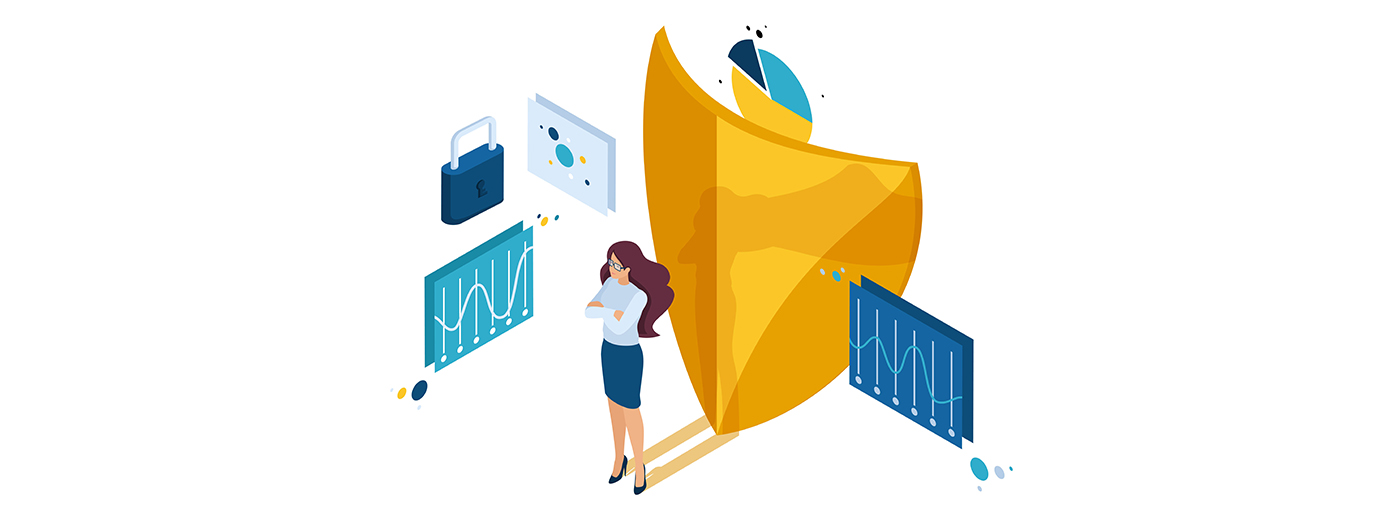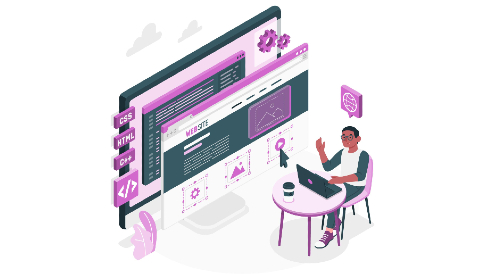Best Practices to Secure Your Website in the Evolving Cyber Landscape
Industry reports on today’s digital landscape provide a similar warning—cyber threats targeting websites are increasing and becoming more sophisticated. In addition to the familiar ransomware attacks, malware infections, Distributed Denial of Service (DDoS) tactics, and phishing attempts, web platforms must contend with bad bots, social engineering tactics, stolen session cookies and tokens, and forged Kerberos tickets. Websites are popular targets because so many online platforms are ripe for cybercriminals who want to steal information stored on servers, exploit site visitors, blackmail website owners, or use black-hat SEO strategies. This is why web design experts and developers strongly suggest paying attention to a website’s security. So, to help you get started, this guide compiles a list of best practices to secure your website and boost its security.
Importance of Website Security

As more websites experience problems due to cybercrimes, the importance of a site’s security cannot be stressed enough. Industry research on website attacks reveals that websites fell victim to cyberattacks 172 times per day in 2022. That is eight attacks per minute. These activities affect both site owners and visitors, and the impact can be devastating. That said, here are some of the reasons why site owners should prioritize website security:
1. Prevent Financial Loss
E-commerce sites and other platforms that handle online monetary transactions have lost billions of dollars due to fraudulent transactions, stolen credit card information, or legal consequences. The ability to secure your website means improving your chances of avoiding financial loss and legal problems and ensuring you satisfy compliance requirements.
2. Safeguard User Data
A secure website can better protect your site visitors’ sensitive information. This can build trust and confidence among your users and encourage them to share information when they engage with your website.
3. Preserve Reputation and Brand Image
Boosting your site security can lower the possibility of falling victim to and being associated with cyber attacks. It creates a credible image and avoids damaging your brand’s reputation among clients and target users.
4. Availability of Website
A protected website is unlikely to experience downtime and other interruptions caused by attacks. This ensures continuous access for customers and users and prevents any possible loss of business. A cybersecurity trend report reveals that 94% of businesses that fell to ransomware attacks experienced downtime and productivity delays.
Website attacks and their impact have undoubtedly changed the online and digital landscape. One of the significant effects is that computer science professionals, such as graduates of easy online degrees specializing in web development and design, do not just focus on enhancing the user experience (UX) and creating platforms that embody a business’s brand but also on cybersecurity.
Best Practices to Secure Your Website from Cyber Threats

There are several steps to boost your site’s security, whether with the help of a dedicated web development team or through your efforts. Here are some of the most recommended best practices to improve website security:
1. Implement Strong Passwords
Cybercriminals use brute force attacks to hack passwords, login credentials, and encryption keys to gain access to a site’s user accounts, restricted areas, or admin panel. Limit these types of cyber threats by:
- Requiring website users to create strong and unique passwords by using a combination of special characters, numbers, and uppercase and lowercase letters
- Specifying a minimum password length
- Sending automated reminders to encourage users to update and change their passwords
- Discouraging the reuse of old passwords
According to a survey from Statista on the main methods of workplace password management, the top strategy used by IT and cybersecurity leaders in the United States was implementing a Privileged Access Management (PAM) solution.
2. Do Regular Updates and Backups
Schedule regular updates to ensure you have the latest patches for fixing security vulnerabilities. It also helps to do frequent backups and have a disaster recovery plan to store valuable data and prevent loss in a cyberattack securely. With the number of data breach incidents increasing each year in the U.S., ensure you have adequate protection to avoid losing sensitive data and credibility. Experts recommend an hourly or daily backup for sites with heavy traffic. If you have plans to redesign your website, this can also be a good time to enhance security features.
3. Limit User Access
There are several methods to protect your site from unauthorized access:
- Use data encryption methods like Transport Layer Security (TLS) and Rivest-Shamir-Adleman (RSA) algorithms.
- Apply multi-factor authentication and temporary account lockouts after several failed login attempts.
- Implement CAPTCHA systems.
- Control access by granting read, write, or edit permissions to only a select few so you can limit the access and manipulation of sensitive data and files.
- Install Secure Sockets Layer (SSL) Certificates, which are digital certificates that provide a secure connection between a user’s browser and your website.
4. Conduct Regular Security Audits
Vulnerability scans and security audits let you thoroughly examine and assess potential weaknesses of your network components, software, apps, and hardware. They help quickly identify misconfigurations and security gaps that hackers can exploit. Use reliable website virus scanner tools and schedule regular vulnerability scans and security audits. Regularly monitoring website traffic and logs is also part of the compliance mandated by industry standards and regulations.
5. Get a Web Application Firewall (WAF)
If you want better protection from malicious web traffic for your web apps, install a WAF. This type of firewall can filter, monitor, and block any suspicious traffic traveling to your web applications. As a result, it strengthens your security against credit card sniffing, automated bot attacks, phishing, and other cyber threats.
6. Conduct Training and Awareness Initiatives
Educating your team and website users about cyber threats and how to protect yourselves from attacks better can go a long way in improving the security of your site. Here are some of the points that you should focus on:
- Inform users about any suspicious activities, security incidents, or data breaches they may encounter while using your website.
- Provide regular training for your team on emerging threats, the latest security tools and strategies, and best practices to manage malicious activities.
- Encourage website users and your team to immediately report any problems or possible threats they detect on your site.
7. Investigate and Analyze the Attack
Understanding how and why a cyber threat penetrated your website’s security defense system is also essential. This can help you assess what went wrong and what you can improve on to strengthen your site’s security.
- Collect all available reports, logs, and incident-related data and interview any employees or stakeholders involved in the incident.
- Document the date and time, the exploited security vulnerabilities, all the affected systems, and other details of the attack that can help with the investigation.
- Analyze the cyberattackers’ attack patterns and methods and determine the target. Focus on tactics, techniques, and procedures (TTP). Look at compromised user accounts, attack vectors, standard IP addresses, etc.
- Keep a record, such as an incident report, on file so you can refer to historical attack data to profile future attackers, improve your mitigation efforts, and enhance your detection mechanisms.
- After fixing the breach or squashing the threat, notify law enforcement and the affected individuals and businesses. This helps increase awareness of emerging cyber threats and ensures compliance with data breach notification legislation.
Keeping Up with the Evolving Cyber Threat Landscape with Secure Websites
Today’s websites must contend that cyber threats are ever-present and waiting for the next opportunity to exploit vulnerabilities on online platforms. Website developers and owners can make sure they remain vigilant and prepared to protect themselves and fight off these attacks by prioritizing and implementing a robust and adaptable security defense strategy and mechanism. Website owners must also use intelligent website design, keep up with the latest cyber threats, and use free tools to boost their site’s security further.
Furthermore, practicing brilliant website security measures is not just a one-time thing; it should be done regularly, especially as cyber threats evolve.




Leave a Reply